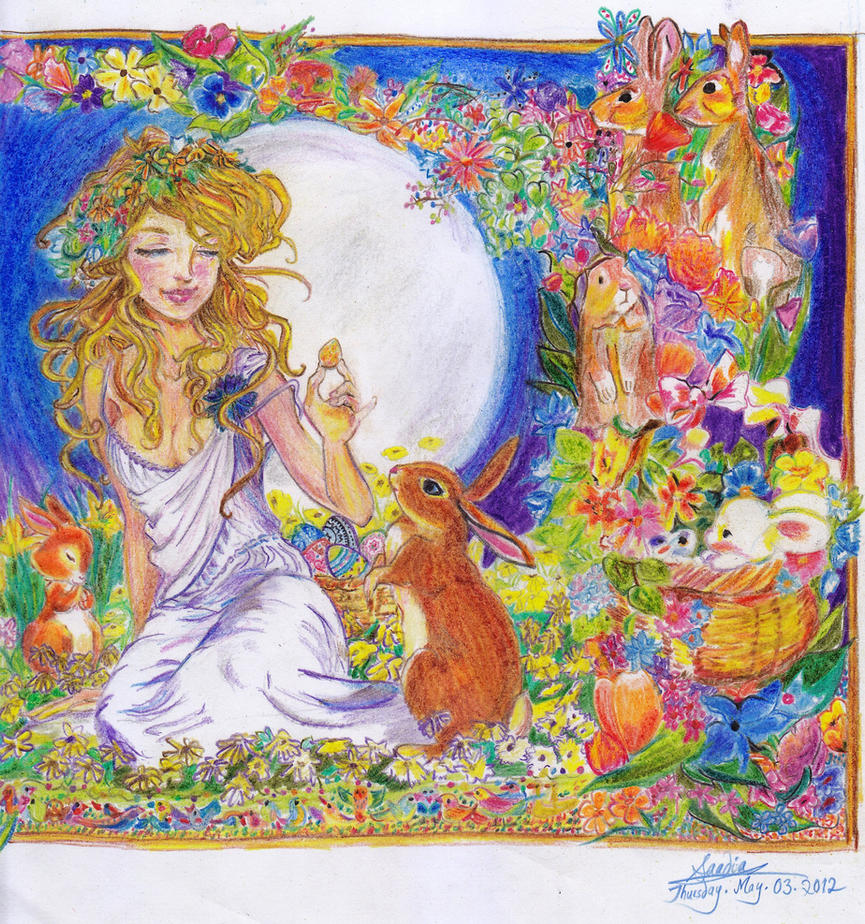Easter as it is best known today has its roots in Christianity, for it celebrates the resurrection of Jesus Christ. However, festivals with rituals similar to modern Easter have been held since before Christianity came onto the scene, and one thing has remained common throughout all of the celebrations. It is upon this that I wish to focus today. Let's take a look at the Easter Bunny, shall we?
(If you haven't seen the movie Rise of the Guardians, I highly recommend it. This particular version of the Easter Bunny is voiced by none other than Hugh Jackman.)
The character of the Easter Bunny has confounded me for a long time. First off...he's a rabbit that lays eggs. I see two problems there – the Easter Bunny is quite often regarded as male, and rabbits bear kits, not eggs. Luckily for me these questions have been addressed by Terry Pratchett in a far better phrased and more witty way than I could hope to use myself.
“...the German and Swiss Easter Hare, who has been laying eggs for children to find since the sixteenth century. Nowadays he is known in Britain and America under the name of the Easter Bunny – a terrible come-down. At first the Hare only laid real eggs, often brightly painted; more recently he has been producing chocolate ones. German and Swiss children enjoy building little nests of moss and flowers and hay, ready for the Hare to use. Just how a hare – and a male hare at that – can lay chocolate eggs will be no mystery to anyone who has noticed certain little brown oval objects in the corner of the rabbit hutch.”
Thank
you, Mr. Pratchett.
But my biggest question has been where the Easter Bunny originated. He can be found in many cultures all over the world, but the hiding of eggs by a mysterious rabbit has no origins in any mythology that I could find.
That is, until I dug deeper for this post.
I've mentioned in my posts about several other holidays that the early Christian church had a tendency to take pre-existing holidays and modify them to suit the church's needs and beliefs. Just as the celebration of Yule was changed for the church's purposes, so too was the celebration of the Vernal Equinox. The Vernal Equinox is a celebration of the coming of spring, and is almost always associated with fertility – not just of the plants and crops, but of humans and animals as well.
One of the early goddesses associated with spring and fertility was Ēostre, also sometimes spelled Ostara. Ēostre was a very early Germanic goddess, and there is little information about her still existing that I have been able to find. The works of Bede, an early Christian scholar, attest to her, as does a book by Jacob Grimm.
From
what I can tell, Ēostre was a goddess associated with spring, with
dawn, and with fertility. If you're interested, this post has more
information on her. It is possible that Easter was named after her.
How
does this tie in with the Easter Bunny, you may be asking?
Images
of Ēostre frequently depict her with a hare or rabbit companion.
Now, it's a well-known fact that rabbits multiply. They are pretty
much the definition of fertility. As such, rabbits are seen as
symbols of fertility in many different cultures. The same holds true
for the early celebrations of the Vernal Equinox – it is my belief
that Ēostre's rabbit would eventually become the Easter Bunny.
There
is even a story to back up this theory. I've heard several
variations on it, but they all have a few things in common.
Ēostre's hare companion was originally a bird. It was injured, and
to save its life she transformed it into a rabbit. (I'm assuming the
injury was to a wing.) The rabbit retained some of its bird-like
nature, however...the ability to lay eggs.
I'll
conclude there, since that's as much as I know about the Easter
Bunny! Have you guys heard other stories as to his origins? I'd
love to hear your thoughts.
However
you celebrate Easter, I hope you have a great one!




